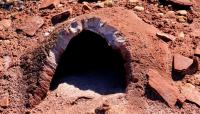Вы здесь
Clumps of heaving on Lake Aschikol.

Sights of Talas district in Jambyl region.
“The Universe is Diversity in Unity"
O. Balzac.
Gypsum crystals on Lake Aschikol.
Gypsum crystalline crust or "heaving mounds" are located on the northern shore of the bitter-salty lake Ashchikol, 50 kilometers to the west and slightly south of the village of Bostanyk, 47.1 kilometers southeast of the Togizkent village, 41.3 kilometers north -east from the town of Karatau in the Talas district of the Zhambyl region.
Also, "heaving mounds" on Lake Ashchikol are located 18 kilometers northwest of the administrative center of Talas district, the village of Akkol. The lake is located at an altitude of 397 meters above sea level. The length of the lake is 6 kilometers 485 meters, the width of the lake is 5 kilometers 855 meters.
The average depth is 3 meters, the maximum depth of the lake is 4 meters. "Heaving mounds" are usually formed during the transition of anhydrite to gypsum with an increase in volume. In Germany, this phenomenon is called "caves of gnomes"...
In the CIS, when specifying the genesis of heaving mounds, they use the term "bulgunnyakh" (from the Yakut bulgunnyakh - "hill", "top", "mound"), which is synonymous with pingo. Both pingo, and bulgunnyakhs, and tufuras (small mounds of heaving) were formed due to the squeezing out of the active layer by waters under high pressure between the upper boundary and the lower boundary of the layer.
Thus, among many Turkic-speaking peoples, the Pingo-Bulgunnyakhs are called "Tebelers" (from the Turkic - "hill", "crown", "peak").
Geographic coordinates of "heaving mounds" on Lake Ashikol: N43 ° 32'16.44 "E70 ° 36'19.22"
Authority and photos:
Alexander Petrov.







